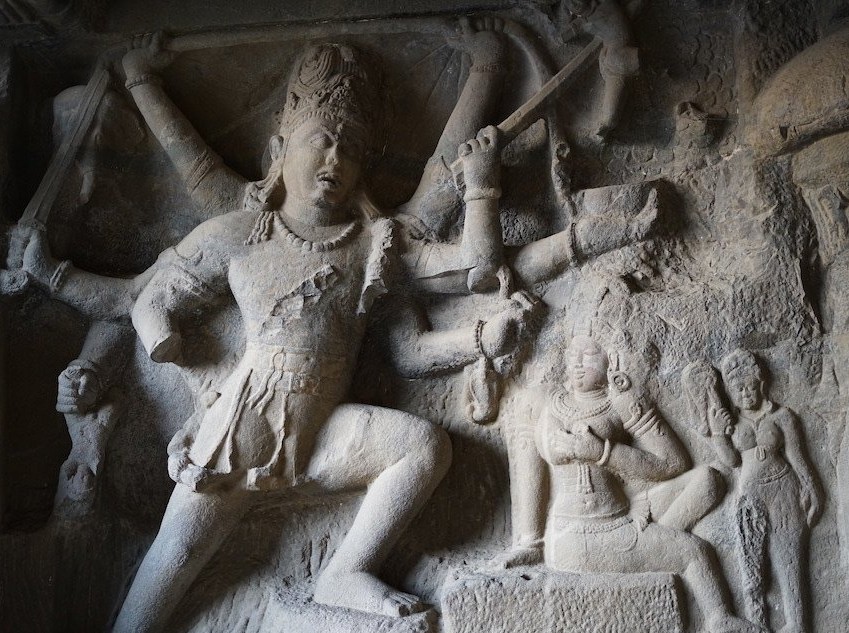Spirit of India
Chokkanathaswamy Temple: Bangalore
Discover Life Travel
Legends Beneath the Surface
Chokkanathaswamy Temple Bangalore - (Hulimavu Cave Temple), is a peaceful and sacred site that beautifully harmonizes history, spirituality, and natural architecture. Believed to be at least 400 - 500 years old, the temple is carved out of a single monolithic rock, making it a unique example of South Indian rock-cut architecture. It is dedicated to three deities: Shiva, Devi, and Ganesha, with their idols occupying the central sanctum. Historically, this temple serves as a testament to the devotion of the saint Sri Balagangadhara Swamiji, who meditated within these caves and whose spiritual essence continues to define the atmosphere of the temple.
Timeless Artifacts & Sacred Spaces
Chokkanathaswamy Temple Bangalore. Offers unique artifacts that connect us to its sacred past. The central cave houses idols of Shiva, Ganesha, and Devi, immaculately carved with intricate detailing despite being sculpted entirely from rock. The Lingam, central to Shiva worship, resonates with divine energy during ceremonies. A highly unusual artifact in the temple is the idol of Agni, the Fire God, rarely seen elsewhere in temple traditions, adding to its spiritual and cultural importance. This idol symbolizes purification and is regarded as a defender against negativities. The cave complex incorporates small engravings and inscriptions believed to mark contributions from past generations. The Dhyan Mandap, specifically designed for meditation, becomes a shrine of tranquility where soft echoes amplify the vibrations of prayer and chants. Together, these sacred spaces preserve a strong connection to devotion and ancient wisdom.
Ancient Mosaics: Impeccable Craftsmanship
Carved out of solid rock, the craftsmanship of the Temple is a testament to ancient Indian knowledge of art and construction. The monolithic nature of the temple reveals an incredible feat of engineering, requiring skill, patience, and precision. The soft curves of walls and statues seamlessly blend into the natural cave formation, reflecting the artisans’ efforts to retain the sanctity of its environment. The design here was not about external grandeur but about connecting spiritual spaces to nature. The carvings inside the sanctum are engrained with divine imagery, depicting deities like Shiva and Ganesha in meditative or blessing postures. The meticulous placement of light pathways within the temple illustrates foresight, especially evident during the Makar Sankranti event when sunlight illuminates the Shiva Lingam.
The Pulse of the Local Community
Chokkanathaswamy Temple Bangalore. This place thrives as a focal point for its local community, binding them through devotion and tradition. The people around the temple care deeply for its preservation and contribute actively to organizing events, particularly during festivals when the community assembles to celebrate and seek blessings. The locals’ hospitality adds a sense of belonging to the temple experience, ensuring everyone feels part of its spiritual legacy. Younger generations are introduced to the traditions of meditation and prayer within the temple’s sacred halls, helping strengthen their ties to the temple’s enduring presence.
Capturing the Magic: A Photographic Haven

The Temple offers spectacular shots with its natural rock formation housing the idols and the dramatic sunbeam during Makar Sankranti. Photographers often focus on the intricate details of the idols, the golden sunlight spreading across the Shiva Lingam, and the serene ambiance of the Dhyan Mandap.
A Culinary Journey: Savor the Flavour
Close to the temple, small stalls serve simple South Indian dishes that highlight the local flavor. During festivals or temple events, devotees often enjoy prasadam like tamarind rice, curd rice, and sweet Pongal, prepared with traditional recipes. These offerings carry spiritual significance, connecting worshippers to practices rooted in gratitude and sharing.
Festivals of Devotion: Honouring the Sacred and the Divine
Makar Sankranti is the most celebrated festival at the Chokkanathaswamy Temple Bangalore. Every year during this event, sunlight illuminates the temple sanctum, moving from the Nandi statue to the base of the Shiva Lingam. This phenomenon is not only visually stunning but also spiritually profound, drawing crowds who see it as a divine alignment. Other festivals include Mahashivaratri, celebrated with overnight vigils, hymns, and special offerings to Shiva. This celebration transforms the temple into a hub of spirituality, with devotees meditating in the Dhyan Mandap, seeking divine blessings.
The Connection with the Gods
The deities within the Temple represent protection, transformation, and guidance. Shiva’s Lingam reminds us of his presence as the destroyer of evil, while the Devi idol symbolizes nurturing energy. Ganesha, placed at the temple’s entrance, is revered as the remover of obstacles. The presence of Agni, the Fire God, ties to themes of purification and renewal. Together, these divine forms create a holistic atmosphere that encourages meditative focus and a sense of transcendence.
Ancient Technologies: Sacred Sound, Geometry and Astrology
The Chokkanathaswamy Temple Bangalore exemplifies ancient technologies that integrate sacred sound, geometry, and astrology to create profound spiritual experiences. Designed using principles of Vastu Shastra, the temple aligns with celestial movements to harmonize cosmic energies. At its core, the sanctum sanctorum (garbha griha) is crafted with resonant stone materials, amplifying specific sound vibrations. Chanting mantras or ringing bells here generates frequencies that interact with the environment and devotees.
These sound vibrations are believed to correspond to Solfeggio frequencies, such as 396 Hz, which liberates fear and guilt, and 528 Hz, known for transformation and healing. The temple’s symmetrical carvings and sacred geometric patterns further enhance these phenomena, directing sound waves throughout the space. The carefully placed pillars and domes resonate with these frequencies, enveloping visitors in a tranquil energy, encouraging meditative states and spiritual awakening.
Serendipitous Meetings: Beyond the Main Path

Surrounding the temple, small-scale vendors sell fragrant offerings like incense sticks, flowers, and coconuts, adding to the spiritual experience. Walking around the temple brings us to smaller unexplored nooks of the cave, where faint carvings and forgotten shrines silently connect us to the past.
Resilience and Renewal: Overcoming Adversity’s Challenges
Built over 400 years ago, the Cave Temple has weathered the test of time. While natural forces began eroding parts of the temple in the past, community efforts and the Sri Sri Bala Gangadaraswami Mutt’s administration have ensured consistent restoration work. Public interest in the ancient light phenomenon and its meditative significance has sparked conservation efforts to preserve this peaceful site.
Urban Legends: Strange Sightings, Myths, and Mysteries
Local stories and myths surrounding the temple have intriqued visitors for centuries. One tale speaks of hidden underground chambers beneath the temple, historically used to store valuable items. While these chambers are now sealed, they remain a source of intrigue, sparking imaginations and adding a layer of mystery to the site. Another belief involves the "pranic points" found around the temple, marked by small white squares on the ground. These points are said to radiate powerful positive energy, drawing pilgrims and spiritual seekers to absorb the tranquil atmosphere.
Folklore also recounts the temple was inspired by a divine vision granted to a devout king, though no historical evidence confirms this tale. Claims of moonlit apparitions or ghost sightings lack verification and are not part of the temple's established legend. Its mystique, however, lies in the spiritual energy, centuries-old rituals, and architectural framework, making the Chokkanathaswamy Temple Bangalore a timeless focal point of fascination in Bangalore.
Pack Your Spirit of Adventure: Find Your Wild Side
As we step into the quiet coolness of the Chokkanathaswamy Temple Bangalore, there’s a palpable shift in the atmosphere. The sacred chants reverberate softly through the Dhyan Mandap, and the rock-carved idols draw us into centuries of devotion. Let’s watch the sunlight slowly move across the sanctum during Makar Sankranti - a transformative moment that connects us to this temple’s timeless spiritual alignment.
Symphony of Generosity: Offerings from Wanderers to Residents
This sacred place thrives through the dedication of locals and pilgrims alike. Devotees light lamps, perform daily rituals, and keep the temple alive through contributions of both tradition and funds. This collaboration between generations ensures that Hulimavu Cave Temple remains a spiritual haven.